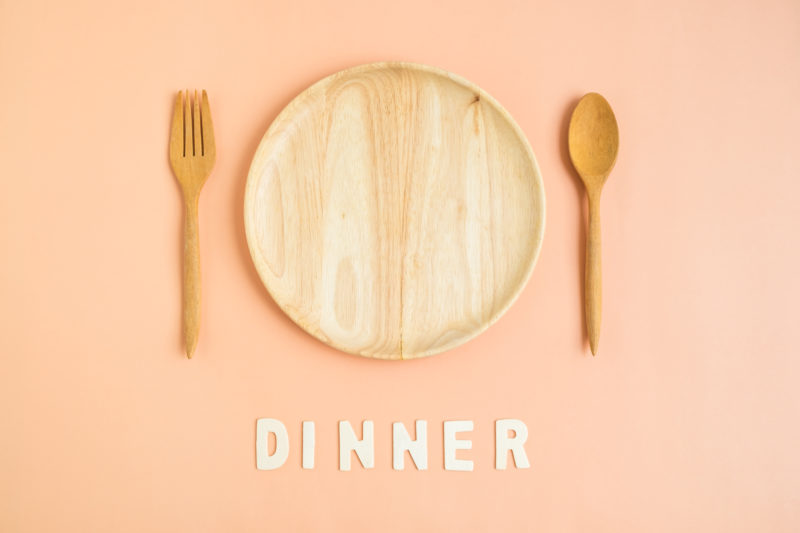
By Hali Anderson
A wise woman once told me the secret to weight loss: Move more, eat less. Four words. Simple, right?
For me, the “moving more” is the easy part. I get up early at least three times per week to hit a 5 a.m. gym class. I get in my exercise and I’m able to make it home in time to help my kids get ready for the day. I also walk my dogs once per day. Move more — check.
Now, for the eating less part … . If you are anything like me, the thought of counting calories after you have spent your whole day counting billable hours is somewhat daunting. Once I am at the office, the last thing I want to do is stress about how many calories are in the chicken Caesar wrap I just ordered or, worse yet, worrying about how little my dinner will have to be in light of said wrap. For me, counting calories is time-consuming and demoralizing. Unless you are always doing your own meal preparation or you are ordering foods with no seasoning, you never know exactly what ingredients or how many calories you are consuming. But, considering that weight loss is said to be “80 percent diet, 20 percent exercise,” does that mean all hope is lost? Is there any way to ensure I am eating less such that it can result in weight loss without having to resort to the dreaded calorie counting?
Fear not. Intermittent fasting is here. Now, I’m sure some of you are already skeptical because of the word “fasting.” “I cannot starve myself,” you are thinking. But, here is the great news — intermittent fasting is much easier than you think. So, what is it?
I like to think of intermittent fasting as an “eating pattern,” not an “eating plan.” It does not say anything about which foods you should eat, but rather when you should eat them. The most popular eating pattern is called the 16:8, which means you fast for 16 hours of your day and eat during the other eight hours. “Sixteen hours without eating?!,” you gasp! Yes, but for many of those hours, you will be sleeping. So, let’s take a typical eating pattern of someone who is doing the 16:8 schedule. Many people opt for an eating window of noon to 8 p.m., which basically means you are skipping breakfast. You eat your regular lunch as well as your dinner. After 8 p.m., you stick to liquids. As a general rule of thumb, if you drink something with less than 50 calories, then your body will remain in the fasted state. So, your coffee with a splash of milk or cream is just fine. Tea should be no problem either. If you’re really hungry, try some vegetable or chicken broth.
The next question is whether you can eat whatever you want during your eight-hour window. And the answer to that is, no, not if you are trying to lose weight. You are still trying to eat less so if you end up eating more in your eight-hour window than you would otherwise eat, you’ll still end up in the same boat. The way I like to think of it is that you are really just shifting your daily food consumption into an eight-hour window, which now means you can spend less time fretting over the calorie intake of every little bite. Whereas before you may have had 600 calories by the time lunch hits, you are now at zero.
You can also choose a different time window that works for your schedule. For example, if you think you will get hungry earlier, you can eat from 11 a.m.-7 p.m. Or, maybe you are a late eater or you know you have late dinner plans so you might want to eat from 2-10 p.m. Any eight-hour window works. But, aren’t you still counting calories? Perhaps. That is up to you. What you at least know is that you are taking in one meal less than you would typically consume so you are cutting out those calories, whatever that amount might be. Note, this is the key: eating less.
The 16:8 is just one eating pattern. There are also a few other popular methods:
- The 5:2: Eat normally five days of the week, while restricting calories to 500-600 on two days of the week
- Eat-Stop-Eat: Do a 24-hour fast, once or twice a week
- Alternate-Day Fasting: Fast every other day
- Spontaneous Meal Skipping: Skip meals when convenient
By allowing your body to go into a fasting state, stored body fat becomes more accessible, levels of human growth hormone increases, cellular repair is initiated and insulin levels decrease — all of which are key health benefits.
But, seriously, is this really healthy, you ask? Isn’t it true that “Breakfast is the most important meal?” “Will I still be able to exercise in the morning on an empty stomach?” Yes, it is healthy. No, it is not true that breakfast is the most important meal. Yes, you will still be able to exercise. Of course, you should always ask your physician before trying intermittent fasting or any eating plan, but by and large, intermittent fasting works for a wide range of people. And for someone with a busy schedule, it is a clear-cut and widely accepted way to plan your eating.
Hali Anderson is a an attorney with GrahamHollis APC